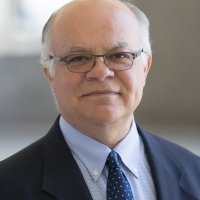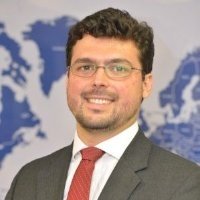Why Brazilians Like Dilma Despite The Bad News
On January 11, 2012, a panel of experts gathered at the Woodrow Wilson International Center for Scholars to discuss the first year of President Dilma Rousseff’s administration and how despite the departure of six ministers accused of corruption and a sharp slowdown of the economy, her popularity reached a record high of 72 percent approval. Paulo Sotero, director of the Brazil Institute, opened the conversation by pointing to the discouraging news that marked the Dilma government take-off and the ability she showed to turn adversity to her political advantage. Although seen as politically derailing, the president’s response to repeated corruption scandals, beginning in June with the resignation of chief of staff Antonio Palocci, allowed the former career technocrat to show unsuspected leadership qualities. By reaching out to opposition leaders, such as former president Fernando Henrique Cardoso, she effectively lowered the political temperature in Brazil and gained the sympathy of millions that did not vote for her in 2010.
Continuity or Change?
Political scientist and Professor Emeritus at the University of Brasilia, David Fleischer, began his presentation by comparing her approval ratings with those of her enormously popular predecessor, Luiz Inacio Lula da Silva. While elected on the coat tails of Lula, Fleischer argued that after three months in officer, her approval rating had surpassed those of all her democratically elected predecessors since 1989.
From the beginning of her tenure, there was a common perception that the Rousseff government would become Lula’s third term in Brasilia, with 16 cabinet members as holdovers from the previous administration to ensure continuity. Fleischer, however, pointed out that “Dilma did not ignore corruption allegations, and instead instituted a process of cabinet house cleaning, or faxina”, which resulted in the resignation of six ministers. President Dilma “came into her own early on”, and demonstrated a strong willingness to push her own agenda. Early on, she distanced Brazil from her predecessor’s accommodating policies on Iran, particularly on human rights. Om the domestic front, Rousseff successfully pushed the creation of the Truth Commission, which was initiated by Lula. She also got Congress to approve a new law on access to information produced at all government levels. She encountered resistance, however, in key legislative proposals such as the Forest Code, sharing among states of pre-salt oil royalties, and a new health tax. The first two proposals will be vote this year. The health tax was shelved.
Comparisons arise
Framing his presentation on how Brazil under President Dilma will navigate an adverse global scenario marked by slow growth in the U.S. and recession in Europe, Christopher Garman, Director and Latin America Practice Head at the Eurasia Group, made that case that the policy environment in Brazil will probably not deteriorate. “We will probably see an administration that will be able to navigate the global downturn,” said Garman, reminding the audience that one year ago the outlook of the Dilma administration was one of one of absolute continuity, that outlook has changed. “Dilma Rousseff is more pragmatic than pundits have given her credit for, she is fiscally more conservative than Lula, and while she is more committed to a heavier role of the state in the economy, she has demonstrated a penchant for pragmatism in dealing with the private sector,” said Garman. One of the first decisions of her administration was to privatize two of the largest airports in Brazil. It was an early demonstration of her willingness to aggressively tackle the country’s infrastructure bottlenecks, a key constraint for growth and competitiveness of the Brazilian economy and a necessity to ensure the success of the World Cup and the Olympics to take place in 2014 and 2016, respectively.
Garman went on to argue that “while Dilma’s approval ratings are high by historical standards, she is no Lula”, in that there is a natural tendency to compare the two leaders, it is, however, important to remember that over the last five years Brazil has experienced an economic boom that has been unparalleled in its recent history.
When analyzing the changing dynamic of approval ratings, particularly at the transition from Lula to Dilma, Garman pointed out that the former president’s approval ratings were driven by economics, but also benefited from a large reserve of political capital that superseded the mere economic cycle and that Dilma does not possess.
What explains her approval ratings remaining so stable? One explanation, according to Garman, is that despite an economic slowdown the labor market has remained active coupled with low unemployment levels and an increase in real wages. The second is the government continually drawing attention to economic awareness. Also helping was Dilma’s push for the middle class; a group that Garman argues will change the face of Brazilian politics in the near future. The Eurasia analyst concluded that looking at the future, the “requisites for political success, not only for Dilma, but for future presidents, will be to deliver quality of public services to the middle class in the fields of education, health, and crime, and not only merely deliver growth.”
The private sector push
Speaking with the private sector in mind, Kellie Meiman, Managing Director at McLarty Associates, noted that now is a great opportunity for collaboration between the Brazilian government and private sectors of both the U.S. and Brazil. There are, however, barriers to that opportunity, such as the deficit of skilled workers. Meiman argued that for strong bilateral investments to succeed, the “workforce issues are going to have to be addressed, and the best way to address them is through private-public partnerships”. She pointed to the Science Without Borders Program as an example. Enacted by Rousseff, the program provides Brazilian students with fully paid one-year scholarships at American universities and colleges in STEM (Science, Technology, Engineering, and Mathematics) fields. Meiman concluded that cooperation between Brazil and U.S. in such initiatives will strengthen and improve relations, as similar programs are promoted by the Obama administration domestically in the United States. She suggested that the up-coming visit by President Dilma to Washington in the first half of 2012 as an opportunity to strengthen those ties.
The “appeasement” of the manufacturing sector
Speaking on the business perspective, Diego Bonomo, Director for Policy at the Brazil-U.S Business Council, posed the question of why that sector likes Dilma despite the bad news? Bonomo argued that the business sector, particularly the manufacturing sector, has a positive outlook on the administration due to the strong commitment by the president to “appease” them, by offering concessions and working with leaders to strengthen the Brazilian economy. President Dilma, in 2011, worked on offsetting the effects of the world economic crisis, and to maintain strong output.
Bonomo described six specific policies of interest to the government and the private sector advanced by Rousseff. The first was the launching of the “Bigger Brazil” industrial policy, an ambitious agenda announced by the president in August of 2011 that outlines measures to streamline efficiency amongst industry while reducing bureaucracy and taxes. The second issue was the strategy to reduce interest rates, a major priority for the manufacturing sector. Echoing an issue brought up by Garman, the acceleration of infrastructure investments is crucial to ensure future productivity while also a national priority in the eve of the World Cup and Olympics.
The second half of the appeasement methods is bringing the issue of currency manipulation directly to the WTO, a direct reference to China’s undervalued currency, and to strengthen anti-dumping measures. In line with the “Bigger Brazil” policy, the administration has crafted an alliance with the CNI (Brazilian National Confederation of Industry), in an effort to strengthen ties between different manufacturing groups while working together to bring about reform and competiveness. The last measure played to Fleischer’s idea of the underestimation of President Dilma’s political, an argument also made by Garman. She appointed Fernando Pimentel, Minister of Development, Industry, and Trade, and Aloizio Mercandante, Minister of Science, Technology, and Innovation, from two states with the largest manufacturing industries Minas Gerais and Sao Paulo, respectively, a move to further solidify the union between the manufacturing sector and the government.
Bonomo suggested, however, that the business sector’s honeymoon with the administration was coming to an end, and that the “Bigger Brazil” policy will not suffice to tackle the countries lingering impediments to competitiveness and growth. Bonomo concluded by expressing doubt on whether the administration will have the political will to pursue such reforms. But like many of the initial skeptics of the Rousseff administration prior to taking office and during her first year in office, he acknowledged that she has demonstrated a capacity to govern and willingness to work on the hard issues at hand.
Drafted by Michael Darden, Program Assistant, Brazil Institute
Edit by Paulo Sotero, Director, Brazil Institute
Photo Credits: Blog do Planalto
Speakers




Hosted By

Brazil Institute
The Brazil Institute—the only country-specific policy institution focused on Brazil in Washington—aims to deepen understanding of Brazil’s complex landscape and strengthen relations between Brazilian and US institutions across all sectors. Read more
